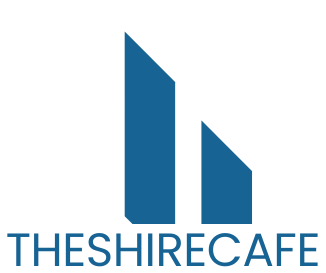Navigating the world of home loans can feel like trying to find a unicorn in a haystack. When financial hurdles come knocking, FHA loan hardship assistance might just be the magical solution homeowners need. This program offers a lifeline to those struggling to keep their homes, turning financial frowns upside down.
Table of Contents
ToggleOverview of FHA Loan Hardship Assistance
FHA loan hardship assistance offers vital support for homeowners facing financial challenges. This program assists individuals struggling to pay their mortgage due to circumstances like job loss, medical expenses, or natural disasters. Homeowners can access various forms of relief, such as loan modifications, forbearance agreements, and other alternatives.
The process begins with homeowners contacting their loan servicer to discuss their situation. Specific documentation will likely be needed, including proof of income, household expenses, and any hardship details. Financial institutions evaluate these documents and collaborate with homeowners to find feasible solutions tailored to their circumstances.
Support extends to both current homeowners and those at risk of foreclosure. FHA guidelines emphasize the importance of preserving homeownership, allowing homeowners to remain in their properties during difficult times. Eligible individuals may also participate in housing counseling programs to gain better financial literacy, improving their ability to manage future challenges.
In addition, the length of assistance varies based on individual situations. While some homeowners receive a few months of relief, others may access extended support depending on the severity of their hardship. The FHA encourages ongoing communication between homeowners and servicers to ensure that all available options are explored.
Ultimately, FHA loan hardship assistance serves as a crucial lifeline for those overwhelmed by financial burdens. It aims to keep families in their homes while providing a viable path forward through challenging circumstances.
Eligibility Requirements
Homeowners seeking FHA loan hardship assistance must meet specific eligibility criteria. These criteria focus on various aspects such as income, employment, and credit history.
Income and Employment Criteria
Income and employment stability play key roles in determining eligibility. Borrowers must demonstrate a consistent income stream, ideally sufficient to support mortgage payments, even amidst financial hardship. Those experiencing job loss should document their situation, providing proof of unemployment benefits or alternative income sources. Employment in stable positions can enhance a borrower’s case; however, proof of financial difficulties remains essential for assistance requests.
Credit Score Considerations
Credit scores substantially influence the eligibility for FHA loan hardship assistance. A borrower’s credit score typically needs to be at least 580 to qualify for FHA loans. However, those with lower scores may still find assistance options available through specific programs. It’s crucial to understand that a low credit score may limit the relief options but doesn’t disqualify individuals completely. FHA programs often emphasize understanding the borrower’s financial situation rather than solely relying on credit scores.
Types of Assistance Available
FHA loan hardship assistance offers various options to support homeowners in distress. These assistance types address financial challenges while aiming to maintain homeownership stability.
Loan Modifications
Loan modifications adjust the terms of an existing mortgage, helping borrowers lower monthly payments. Interest rates may decrease, or loan durations can extend to ease the financial burden. Documentation of hardship is necessary, as a servicer evaluates the borrower’s situation. Modifications often result in more manageable payments that align with current income levels. This process aims to keep families within their homes while offering flexibility tailored to their needs.
Repayment Plans
Repayment plans allow homeowners to catch up on missed payments over time. These plans typically include a structured timeline, often spanning several months, to pay back overdue amounts. Flexibility exists in the number of payments and their amounts based on the borrower’s financial situation. Homeowners communicate with their servicer to establish a feasible plan. These arrangements help reduce the risk of foreclosure while providing a clear path to financial recovery.
Forbearance Options
Forbearance options temporarily reduce or suspend mortgage payments during financial hardship. This solution serves as a short-term relief measure, typically lasting three to six months. Homeowners maintain communication with their loan servicer to determine eligibility and specific terms. At the end of the forbearance period, servicers and borrowers outline a strategy to handle missed payments. This approach ensures that families can remain in their homes while managing their financial challenges effectively.
How to Apply for Assistance
Applying for FHA loan hardship assistance involves a few key steps. Homeowners need to prepare specific documentation and follow a structured submission process to ensure their applications receive proper consideration.
Preparing Your Documentation
Homeowners must gather essential financial documents before applying. Income statements, like pay stubs or tax returns, serve as proof of earning. Details about monthly expenses, including utility bills and other debts, provide a clearer financial picture. Documentation related to the hardship, such as job loss notices or medical bills, strengthens the application. Lastly, maintaining a record of communication with the loan servicer helps document interactions and any agreements made.
Submission Process
Submitting an application for assistance requires contacting the loan servicer directly. Homeowners should reach out via phone or through secure online platforms. After confirming eligibility, they will need to provide collected documentation. Responses are often provided within a specified timeframe, so checking in regularly regarding the application status is important. If assistance is approved, servicers will outline the next steps for utilizing the aid.
Tips for Navigating Hardship Assistance
Understanding available options is essential when navigating FHA loan hardship assistance. Start by contacting the loan servicer promptly. Providing necessary documentation, such as income statements and details about expenses, helps expedite the process.
Utilize housing counseling programs to enhance financial literacy. These programs can offer valuable insights into managing finances during difficult times. Gathering all relevant documents before making contact can streamline the application process.
Communicate clearly with the loan servicer about individual circumstances and any changes in financial status. Each interaction serves as an opportunity to clarify questions and receive tailored advice. Being proactive regarding the application status is important. Regular follow-ups ensure homeowners remain informed about their requests.
Knowledge of different assistance options can guide decision-making. Loan modifications may lower monthly payments, while repayment plans facilitate catching up on missed payments. Forbearance options allow temporary suspension or reduction of payments during hardships, making it vital to understand which suits personal situations best.
Tracking deadlines helps maintain an organized approach. Note key dates, such as when documentation is required or when to follow up with the servicer. Understanding eligibility requirements streamlines access, as consistent income is crucial even amidst hardship.
Seek support from family or friends during this challenging process. Financial assistance or emotional support from loved ones can make a significant difference. Focus on maintaining communication and engagement throughout the journey to achieve a successful outcome in navigating FHA loan hardship assistance.
FHA loan hardship assistance stands as a crucial resource for homeowners grappling with financial difficulties. By offering various forms of relief such as loan modifications and forbearance options, it helps individuals maintain their homes during challenging times.
Navigating the application process can be daunting, but with the right documentation and proactive communication, homeowners can access the support they need. This program not only aims to preserve homeownership but also empowers families to regain financial stability.
For those facing hardships, reaching out to a loan servicer and exploring available assistance options can pave the way toward a brighter future.



